Hughes was in Belfast one night, just before the ceasefire, when one of his men told him that a Provo named Joe Russell had been shot. He immediately went to see Russell, and found him clutching a wound. He hadn’t gone to hospital – too risky – so there was still a bullet lodged in his gut. Hughes made arrangements to have Russell taken over the border, to a hospital in Dundalk that was known for offering treatment to wounded republicans, with ‘no questions asked’.
But a mystery remained: Who was the gunman? Russell had been at home at the time. A man came to his front door and, when Russell opened it, the man shot him and then ran off. Russell told Hughes that he thought his assailant was a member of the Stickies – the Official IRA. This theory was endorsed by Joe Lynskey, the soft-featured Provo intelligence officer whom people called the Mad Monk.
During the Troubles, unlicensed drinking clubs opened up in neighbourhoods all over Belfast. These establishments were known as ‘shebeens’. Many of the traditional pubs had been burned out or bombed, and in this notoriously thirsty city, such informal watering holes sprang up to meet a need. It had become so risky to venture outside one’s own safe ethnic enclave that when shebeens were established in residential neighbourhoods – often in former homes that had been abandoned – they provided a safe and convenient alternative to the pub. By the end of 1972, some two hundred shebeens were operating throughout Belfast. They were open seven days a week, with no fixed hours. The booze was often stolen from hijacked lorries, and the proceeds frequently went to whatever paramilitary group controlled the neighbourhood in question.
A number of these shebeens were operated by the Official IRA, and members of the Officials liked to congregate in them. One was called the Burning Embers (Brendan Hughes set fire to it once, and he liked to joke that he had burned the Burning Embers). Another Official shebeen was the Cracked Cup, an outfit on Leeson Street so named because it occupied a former shop that had sold second-hand crockery. The place was not much to look at. The floorboards were rotting, the lighting was dim, and patrons sat on rickety chairs, huddled around their pints. There were pictures of the Virgin Mary and Patrick Pearse on the wall.
Looking for the man who had shot Joe Russell, Hughes dispatched a posse of gunmen to the Cracked Cup. They strode in, weapons drawn, and barred the entrance. One of the patrons that night was a man named Desmond Mackin. He had come out to celebrate Father’s Day with his wife, Margaret, and his seventy-year-old mother. Mackin was not a member of the Official IRA; as it happened, he had a son who had recently joined the Provos. But as Hughes’s gunmen ordered the men to kneel on the floor and jostled Mackin’s wife and mother, Mackin made the mistake of resisting. A spurt of gunfire lit the gloom, and a bullet pierced Mackin’s thigh.
The gunman was a young Provo, barely out of his teens. It would later emerge that by the time the gunmen crashed into the Cracked Cup that night, they may have all been quite drunk. Mackin’s wife collapsed over his body, screaming. But the Provos would not let anyone summon an ambulance, for fear of attracting the authorities. For fifteen long minutes, they all stayed inside the Cracked Cup while Desmond Mackin bled to death on the floor.
The press would characterise the shooting that night as a ‘power struggle’ between the Officials and the Provos, and, at a glance, that certainly appeared to be the case. One newspaper suggested that the incident might spark an ‘all out war’. But, really, Desmond Mackin was just an innocent bystander, collateral damage in a badly botched operation. And when Hughes continued his enquiries into who it was that shot Joe Russell, he made an alarming discovery. It hadn’t been the Officials at all. On the contrary, it was one of his own men.
Of all the social conventions the Troubles upended, one that was seldom discussed was romantic relationships. With its combination of Catholic and Scots Presbyterian cultures, Belfast could be an oppressively prudish society. But as the violence warped everyday life, long-established social mores began to loosen. The omnipresence of mortal danger drove some people to live their lives with a newfound, and sometimes reckless, intensity.
The Mad Monk, Joe Lynskey, had entered the monastery when he was only sixteen years old. When he left the order, in his twenties, and returned to Belfast, he found a job at a silk and rayon factory in the Clonard area and began to reclaim the youth he had lost to his years of prayer and pious contemplation. He was, in the words of one relative, ‘very much into running after women and doing the normal things that young people would have done’. In the monastery, Lynskey had received a solid education. He studied history and, in particular, the matter of the injustices suffered by working-class Catholics in Ireland. He did not come from a republican family: his father was a timid man who would not have wanted his children to become involved in that sort of activity; his older brother was in the Royal Navy. But Lynskey eventually decided to join the IRA. He grew close to Dolours Price, who was fond of his awkward but gentle manner. ‘He was a mature man but he was in many ways immature in the ways of the world,’ she observed. Brendan Hughes had always seen Lynskey as ‘a strange fella’, an odd artefact of the older generation. He was smart and erudite, a chain smoker, and he carried in his pocket a book about his hero, the Irish revolutionary Michael Collins. But he could be a bit aloof. What Hughes did not know about Joe Lynskey was that he was having an affair with Joe Russell’s wife.
After the shooting at the Cracked Cup, the Provos conducted an internal inquiry and discovered that Lynskey had ordered a younger IRA gunman to murder his fellow volunteer – his lover’s husband. The gunman undertook this mission assuming, because Lynskey told him so, that Joe Russell had become an informant to the authorities. But when Russell came to the door, the gunman, losing his nerve, shot him in the stomach, then ran off. In the initial hunt for the shooter, when Hughes and his men started asking around, they consulted the brigade intelligence officer, Joe Lynskey. Rather than confess that he had tried to murder his love rival, Lynskey placed the blame on the Stickies.
For a group with an alarming tendency to kill people by accident, the IRA had an elaborate internal mechanism for determining whether to kill people on purpose. Lynskey would have to face a court-martial for having endeavoured to murder one of his fellow volunteers, and for having sought to cover up his crime in such a manner that another innocent man lost his life. This was a choreographed process designed to provide a form of internal accountability that was putatively less arbitrary than a quick bullet in the back of the head. But IRA court-martials were not exactly known for acquitting people. And given the gravity of Lynskey’s crimes, his fate looked dire.
Inside the Provisionals, a new squad had recently been established. Like some black-ops government programme, it was a unit that ostensibly did not exist – a tiny, elite cell called the ‘Unknowns’. The commander of the Unknowns was a diminutive, serious-minded operator named Pat McClure, a man Brendan Hughes called ‘Wee Pat’. McClure was in his thirties, which made him fairly old by the standards of the Provos at the time. He had actual military experience (and an unusually intimate familiarity with the enemy), having served in the British Army prior to the outbreak of the Troubles. McClure kept a scrupulously low profile. But he was regarded by those who knew him as an exceedingly capable and dedicated soldier.
Читать дальше
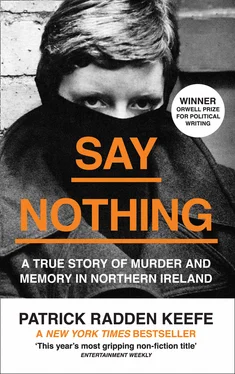
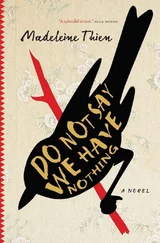
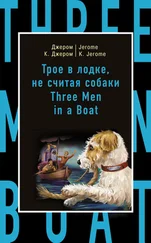

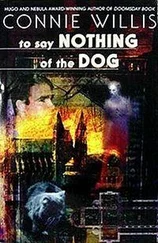
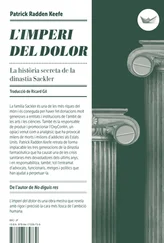
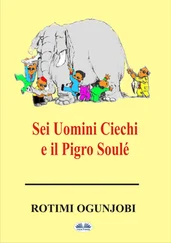





![Helen Rowland - The Widow [To Say Nothing of the Man]](/books/752764/helen-rowland-the-widow-to-say-nothing-of-the-man-thumb.webp)